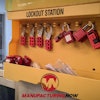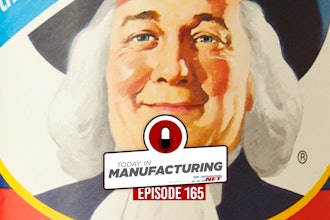The most preventable problem affecting safety in today's energy, chemical and petrochemical industries is corrosion. No matter which sector of the industry, whether sourcing, refining, transportation, corrosion continues to be the root of accidents and the ability to combat this notorious issue begins with what matters the most — chemical composition of materials.
An initial step as an industry toward preventing corrosion is to move away from antiquated chemical compositions. I am not speaking to those of yesterday, but those of the last century used to create carbon and stainless steels, which are unfortunately still used today. Next generation solutions have been developed by metallurgists, chemical and material engineers that strengthen integrity management systems at their core by easing the preventative maintenance burden for both safety and cost-benefit improvement.
The May 19, 2015 pipeline rupture in Santa Barbara County, California leaked over 100,000 gallons of crude oil onto the pristine coastline and into the Pacific Ocean. Unfortunately, this is a timely reminder not only for those residents and animals that live in the affected area, but for our entire industry.
Modern materials are specifically designed to take into account the environments in which pipelines are also installed. For instance, Santa Barbara County beaches endure high temperatures and are in constant salt water contact.
When a highly corrosive salt exists in a moist environment and is then paired with escalating temperatures, corrosion is sure to follow. Recent reports indicate serious wear was detected in the ruptured stretch of pipe, all due to external corrosion, and that federal regulators believe over 80 percent of the pipe was worn down to 1/16 of an inch in 6-inch long corroded, broken area of the pipe.
As an engineer with an eye on technical services for a solutions provider serving high-corrosion industries, I can say this is one of the most corrosion-prone environments to operate in. Metallurgists, chemical and material engineers have taken into consideration the elements, as well as what can happen when resources inside a pipeline cause corrosion. However, this is also not the only method of resource transportation which corrosion is affecting.
In the wake of recent train derailments and subsequent injury or death across North America (Lac-Megantic, West Virginia, North Dakota, etc.), federal regulators on the first day of May rolled out new safety standards designed to mitigate further incidents including "stronger" tank cars and electronic braking systems. However, yet again, they have ignored the chemical makeup of tank car materials and only addressed the thickness a tank car shell must be.
Only two weeks before the Santa Barbara incident, ten cars ruptured and caught fire near Heimdal, North Dakota, forcing residents to evacuate their homes and businesses. The train, carrying approximately 30,000 gallons of oil, consisted of CPC-1232 tank cars, which have been in service for four years and are supposed to provide greater support.
Under the aforementioned rules released by the United States Department of Transportation (DOT) only days before this accident, CPC-1232s will now be phased out for tank cars which will be more puncture resistant due to the thickness of their shell. However, corrosion directly affects the toughness of a tank car shell and is allowed to prevail and reduce strength because of its 20th century chemistry.
We applaud federal regulator's efforts to increase safety along the rails, but this is a short-sighted mandate. By introducing newly designed cars that only add extra weight (approx. 10,000 lbs. per car), the intended enhancement could be rendered void. Thanks to modern chemical compositions, readily available, next generation stainless steels are more corrosion-resistant and stronger than what would be used to design cars that fit under the May 1st directive. These are also lighter and take pressure off a new design intended to improve safety.
Not only would the load capacities per car decrease due to extra weight, but even more cars would have to be included in each train in order to carry an equivalent load. The material technology exists, however education is lacking. An advancement in chemical composition is the cornerstone of a solution to make tank car transportation safer.
The DOT, as well as its Pipeline and Hazardous Materials Safety Administration (PHMSA), have the ability to allow for such next generation material grades to be approved in fabrication of pipelines and tank cars. They do not need to mandate its use, but simply give specifiers the option to improve safety, as well as cost stability, and reap the benefits of newer stainless steels that metallurgists have dedicated their careers to designing.
In the past few years I have seen exceptional advances in material engineering and metallurgy, the majority of which will eventually be applied to the energy, chemical and petrochemical industries. By being proactive, accepting modern chemical advancements and allowing these next generation materials to boost corrosion prevention and maintenance, the next generation of our workforce will be able to take these industries to unprecedented levels of safety and success.
About the Author: Ken Grantham is the Executive Vice President of Crompion International.






















